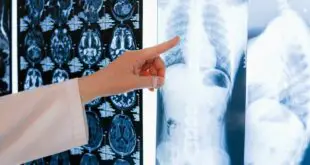COVID-19 presents serious health risks for everyone, especially children, and
parents need more information about the virus and how to test their children. Testing
efforts help parents determine if the kids have been exposed to the virus, or if the
kids have an active case. By reviewing all testing options and other details, parents
learn what to do next.
Understanding the Symptoms
COVID-19, the flu, and other respiratory illnesses have similar symptoms, including
fever, congestion, headaches, sore throat, and a cough. For some children, there
aren’t any COVID-19 symptoms. When parents suspect that their kids could have the
coronavirus or another respiratory illness, testing is the only way to confirm the
diagnosis.
As the colder seasons approach many areas throughout the US, more school
children will become exposed to a variety of seasonal illnesses and must visit a
doctor to find out what is wrong. Pediatrician for COVID-19 PCR Testing can give
parents the answers the parents need about their kids illnesses.
Was Your Kid Exposed to COVID-19?
As children return to school, there is a greater risk of exposure to the COVID-19
virus. Even with many safeguards in place, children could become exposed to the
virus no matter how careful the schools are.
According to recent studies and mandates, school officials must notify all parents if
their children have been exposed to the virus and require testing to confirm or deny a
COVID-19 diagnosis. Many parents will quarantine their kids if the children were
exposed for at least one week to lower the risk of contracting the virus and spreading
the condition around in the school.
Understanding the Types of COVID-19 Tests
When testing for COVID-19, parents must understand what tests are available.
Rapid antigen tests are used to detect proteins found in the immune system that are
there to fight the coronavirus. Doctors use this test only when a child is exhibiting
active COVID-19 symptoms. For children, the test is conducted with a swab that isn’t
pushed way up into the nasal cavity or causes discomfort for kids.
The COVID-19 PCR test is conducted with a nasal swab or sample of the child’s
saliva, and the tests are used to find the virus in the body. The virus is detected at
different stages of development when completing the tests. The test results don’t
mean that the child has the virus, but the tests indicate whether the child has been
exposed to the virus at any time.
The COVID-19 antibody tests detect antibodies from the virus. If the antibodies are
found in the system, this means that the body is fighting the virus and producing
adequate antibodies to help the child recover faster.
What To Do After a Positive Test Result
Doctors provide instructions on how to manage COVID-19 infections from home. The
patients shouldn’t come to the hospital unless the children are experiencing more
severe symptoms such as difficulty breathing. All doctors recommend quarantining
the kids during treatment to prevent further exposure, and the kids shouldn’t return to
school until after a full recovery from the virus.
The COVID-19 pandemic has presented many challenges for parents and children.
Testing efforts can determine if kids have been exposed or have an active case of
the coronavirus. By understanding what tests are available, parents learn what tests
are most effective and understand what the results really mean.
 Being Human
Being Human





